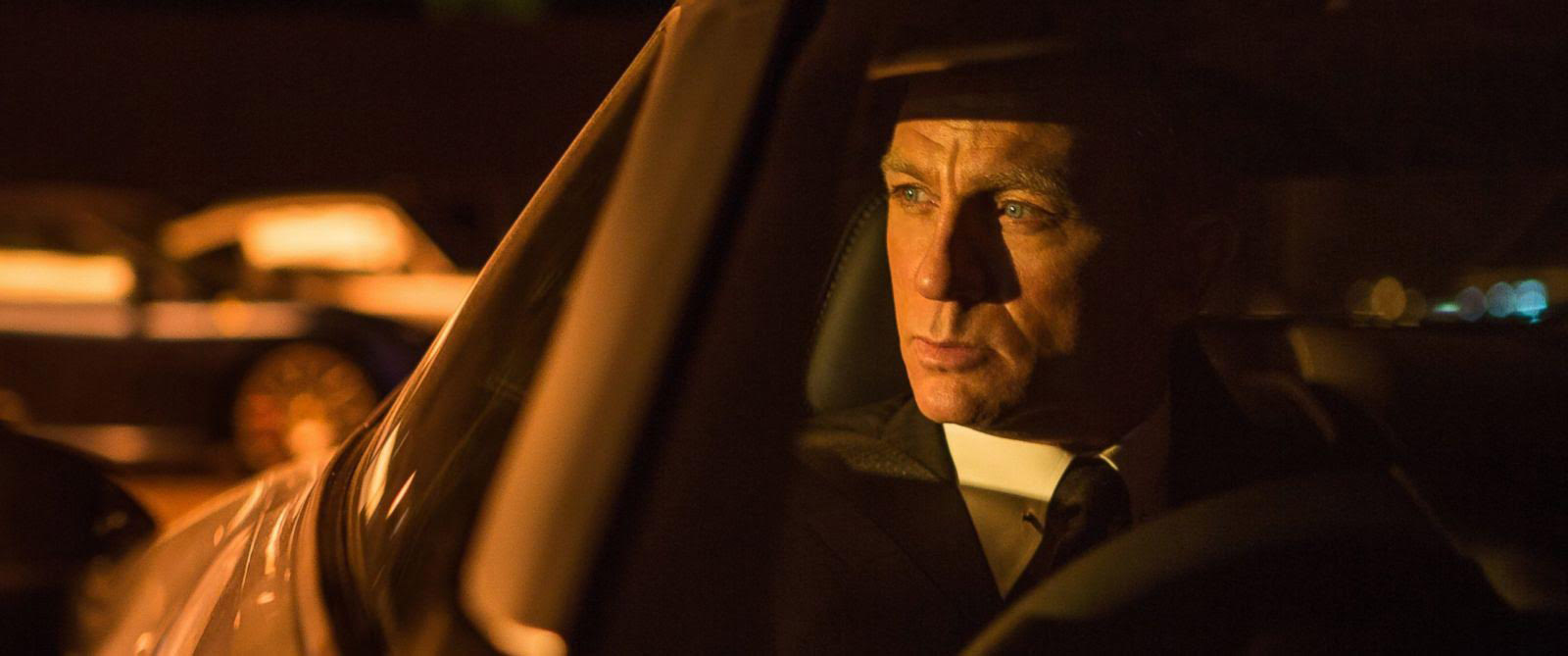Movie Review: ‘Spectre’

(Courtesy of Columbia Pictures)
By William Thorne
Nov. 8, 2015 4:19 p.m.
He races a vintage Aston Martin through narrow streets, has gorgeous girls fall into his arms, all while sipping a dry martini, shaken, not stirred. His name is Bond, James Bond.
There have been 23 James Bond movies to date, and it’s fair to say the series has had its highs and lows. It began with the genre-defining Sean Connery incarnations like 1964’s “Goldfinger,” transitioned to the farcical Roger Moore versions like “Moonraker” in 1979 and nearly ended with the utterly forgettable Pierce Brosnan films like 1997’s “Tomorrow Never Dies.”
With the Daniel Craig reboot of the series, out went the gimmicky gadgets and throwaway one-liners and in came serious action and spectacular set pieces. The thrilling chase up a crane and through a bullet-riddled embassy in the first ten minutes of “Casino Royale” set the tone. From there Craig has helped move the franchise into the 21st century. That is, until “Spectre.”
“Spectre” channels the ghosts of Bond movies past, but forgets to make its own imprint on the franchise.
After the events of “Skyfall,” the British intelligence agency MI6 is in surgery. The new M (Ralph Fiennes) has to look on as C (Andrew Scott) scalpels MI6 and MI5 together into the new Joint Intelligence Service. Not only that, but C is also bent on scrapping the ’00’ program of which James Bond is a part.
A shadowy organization by the name of “Spectre” runs in the backdrop of all this, and its ruthless, soft-spoken leader is a ghost from Bond’s past.
The film begins very promisingly with a gripping long take of Bond weaving his way through the crowded streets of Mexico City on Día de los Muertos. The camera captures Bond’s shark-like, predatory movements with tight close-ups to the back of his head and a sweeping tracking shot as he swaggers along a rooftop ledge.
The scene as a whole shows ingenuity on the part of Mendes, featuring the cinematic originality that made “Skyfall” so popular.
Unfortunately for “Spectre,” that’s pretty much where the originality ends.
“Spectre” carries on where “Skyfall” left off in terms of plot, but it fails to live up to its predecessor’s wow factor and blistering pace.
The biggest problem with the film is its outrageous self-reference. “Spectre” is acutely aware it is part of the gargantuan Bond franchise: It rolls out the old, cliched villains, cars and gadgets in a smarmy and smug way.
READ MORE: Sam Smith brings drama to new Bond movie with “Writing’s on the Wall”
The film plays the nostalgia card a few too many times. Bond devotees will love that Mr. Hinx (Dave Bautista), the muscle-mountain henchman with a nonspeaking part, is basically the same character as series favorite Jaws and that the fight scene with him on the train is a copy-and-paste job from “The Spy Who Loved Me.” They will also enjoy the sit-down dinner scene between Bond and the film’s nominal Bond-girl Dr. Madeleine Swann (Léa Seydoux), which, if transposed next to a scene with Vesper Lynd from “Casino Royale,” would appear almost identical.
But what is there in the movie for people who don’t get all these references, who don’t fear a repeat of the cringeworthy chimney-stack demise when villain Ernst Stavro Blofeld (Christoph Waltz) climbs into a chopper?
Well, at the heart of the film, there’s a solid acting performance from Craig to satisfy newer audiences, given more acting and less fighting to do in than in “Skyfall.” There’s also the ever-fantastic Waltz, who steals every scene with his now-signature maniacal, pantomime villain bit. Seydoux’s nuanced performance as the most three-dimensional Bond-girl since Vesper Lynden is also worth watching.
“Spectre” is a fun, well-acted, handsomely-filmed spectacle that nonetheless fails to deliver on a deeper level. It relies too heavily on the romantic vision of Bond as a suave, supreme seducer perpetuated by the ’70s and ’80s Bond of Roger Moore, rather than the more profound, modern psychological analysis of Bond from “Casino Royale.”
– William Thorne


